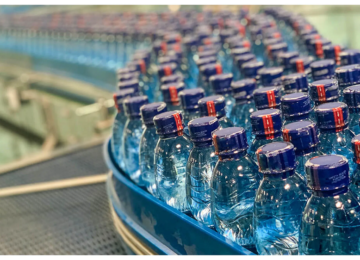If you’re looking for precision CNC machining for defense, there are many factors to consider. Here are a few things to consider: tolerances, processes, machine bed, and applications. These elements can all play a big part in your decision. If you’re unsure of the specifics of cnc manufacturing, these tips can help you make the right choice.
Process
In addition to metals, precision CNC machining can also be used to fabricate parts from wood, fiberglass, or polypropylene. While machining any of these materials can be highly precise, different materials have different properties and can affect the process. Precision CNC machining has several advantages over traditional machining methods, such as speed, accuracy, and quality.
Precision CNC machining starts with a computer-aided design (CAD) file that contains all the information required to produce the product. The CAD file is then converted into toolpath instructions that tell the CNC machine how to cut or shape the workpiece. Once the toolpath is loaded into a CNC machine, it starts cutting the part according to the design parameters. CNC machining is an effective process that can help companies produce high-quality products at record speeds.
Applications
Precision CNC machining is a highly-efficient method of manufacturing parts and components that need to be precise and uniform. It is used in manufacturing components for airplanes, railways, and automobiles. Approximately 70 million cars are produced each year, and these manufacturers must be sure that the parts they produce are as precise as possible. Humans, on the other hand, do not have the level of precision that machines can.
One of the most common applications of precision CNC machining is the fabrication of tiny parts. In this application, precision CNC machining is used to make intricate parts that require micro-machining. This technology enables rapid prototyping, which allows for the transformation of computerized designs into working prototypes. Precision CNC machining has a range of other applications, including the fabrication of medical implants and medical devices.
Tolerances
Tolerances in precision CNC machining refer to a set of criteria that is used to control the quality of parts. Tolerances are listed on drawings as a means of avoiding ambiguity and ensuring consistency. Tolerances can be derived from two main types of specifications: geometric and dimensional. Geometric tolerances are more universal than dimensional tolerances. They highlight the measured value as well as the deviation interval. Geometric tolerances are typically used for high-precision CNC machined parts. Single-sided tolerance refers to a deviation in only one direction and is listed as a +0.01/-0.05mm. Finished CNC machining parts can be expanded to a tolerance of 0.01mm or decreased to -0.05mm. However, they cannot be larger than the specified size.
Another consideration is plating. While it may not seem significant, a plating operation will add small amounts of material to the surface. This can change the overall dimensions of the finished product. Because of this, tighter tolerances are more expensive. Furthermore, they require additional fixturing, special measurement tools, and longer cycle times. In other words, they can be twice as expensive as standard tolerances. Tolerances are essential for precision CNC machining.
Machine bed
The structure of the machine bed for precision CNC machining differs from one machining center to the next. In general, there are two kinds of bed structures: fixed column and mobile column. For medium-sized CNC machining centers, the former is divided into two parts: an overall T-shaped bed and a transverse rear bed. If you’re buying a precision CNC machining machine, you should carefully consider its bed structure.
Most CNC machines have box-like structures, but an alternative is a ribbed CNC machine bed. Ribbed CNC machine beds are stiffer than boxes and can be used to improve both bending and torsional rigidity. Diagonally inclined or intersecting ribs are more effective in improving column stiffness. The structure of the CNC machine bed can also be modified to increase the outer contour size and rigidity of the machine.
Cost
CNC machining is one of the most advanced technologies for manufacturing components. Precision CNC machining improves workflows from CNC prototyping to full-scale production. CNC machines allow developers to quickly build functional designs for testing and full-scale development as demand grows. The benefits of CNC machining go beyond reduced production costs. These high-precision components reduce waste and production costs. The cost-effectiveness of precision CNC machining is well worth the investment.
The price of custom CNC machining services is directly related to the complexity of the job. A high-precision machine will take more time to complete than a simple one. The price of CNC machining services will be higher if the parts are complex and require a lot of tools and multiple machine setups. In addition, CNC machining service providers will charge higher prices for prototypes and small-scale production runs. These factors will affect the overall cost of precision CNC machining.












